The Metabo Miter Saw is a powerful tool that plays a crucial role in woodworking projects. Designed to make precise cuts at various angles, this saw enables craftsmen to achieve exceptional accuracy and efficiency in their work. Unlocking the full potential of the Metabo Miter Saw can significantly enhance your woodworking experience and deliver outstanding results.
By mastering the capabilities of this tool, you can effortlessly create clean and precise cuts, saving time and ensuring the perfect fit for your project. In this article, we will provide you with a step-by-step process to unlock the full potential of your Metabo Miter Saw, empowering you to take your woodworking skills to new heights.
Whether you’re a beginner or an experienced woodworker, understanding the intricacies of this tool will open up a world of possibilities. From constructing furniture pieces to tackling complex woodworking projects, the Metabo Miter Saw offers versatility and precision that can elevate your craftsmanship.
Throughout this article, we will guide you through the essential aspects of the Metabo Miter Saw, from its basic components to advanced techniques. You’ll learn how to assemble and set up the saw correctly, choose the right blades for specific tasks, and master essential cutting techniques. We will also explore the functionality of the miter gauge and bevel angle adjustment, as well as discuss the use of accessories to enhance your saw’s performance.
By the end of this article, you’ll have the knowledge and confidence to unlock the full potential of your Metabo Miter Saw, enabling you to achieve remarkable results in your woodworking endeavors. So let’s dive in and discover the step-by-step process that will help you maximize the capabilities of this exceptional tool.
Understanding the Basics of the Metabo Miter Saw
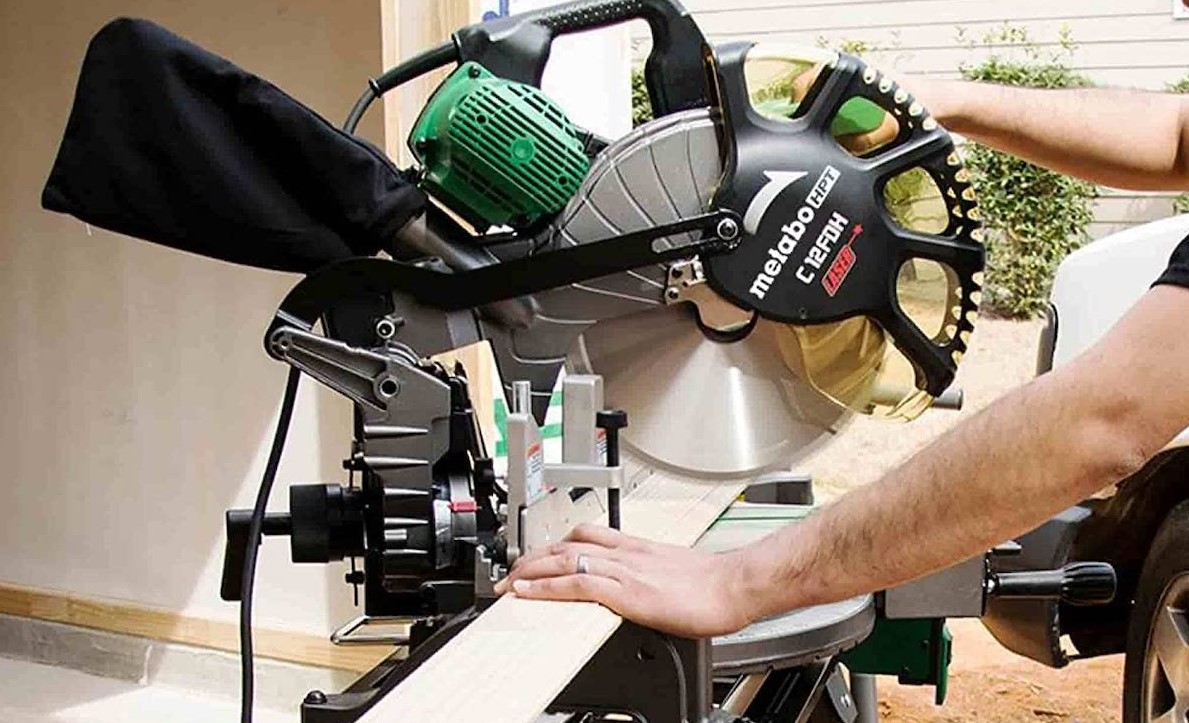
The Metabo Miter Saw consists of several key components that work together to provide accurate and efficient cutting capabilities. To unlock the full potential of this tool, it’s essential to understand each component and its functionality. Let’s explore them in detail:
- Blade: The blade is the heart of the Metabo Miter Saw. It’s responsible for making the actual cuts in your workpieces. Metabo Miter Saws typically come with high-quality, sharp blades that are designed to cut through various materials with precision. The type of blade you choose depends on the specific material and cutting requirements of your project.
- Miter Gauge: The miter gauge allows you to make precise angle adjustments when cutting. It is usually located on the base of the saw and can be rotated to different angles, enabling you to create accurate miter cuts. The miter gauge is particularly useful when making angled cuts for frames, moldings, or other projects that require precise angles.
- Bevel Angle Adjustment: The bevel angle adjustment feature allows you to tilt the blade of the Metabo Miter Saw to make bevel cuts. Bevel cuts involve tilting the blade at an angle to create angled edges or joints in your workpieces. This adjustment feature is crucial for projects that require beveled edges or complex angled cuts.
- Fence: The fence is a guide that helps keep your workpiece stable and aligned during the cutting process. It ensures consistent and accurate cuts by providing a reference point for your material. The fence can be adjusted to different positions along the base of the saw to accommodate various workpiece sizes.
- Sliding Mechanism (if applicable): Some models of the Metabo Miter Saw feature a sliding mechanism. This allows the saw head to slide forward and backward along a rail, increasing the cutting capacity and allowing you to work with wider or longer workpieces.
Understanding the purpose and functionality of each component is essential for utilizing the Metabo Miter Saw effectively. As we delve deeper into unlocking the full potential of this tool, we will explore how to leverage these components to achieve precise and accurate cuts for your woodworking projects.
Ensuring Safety Precautions
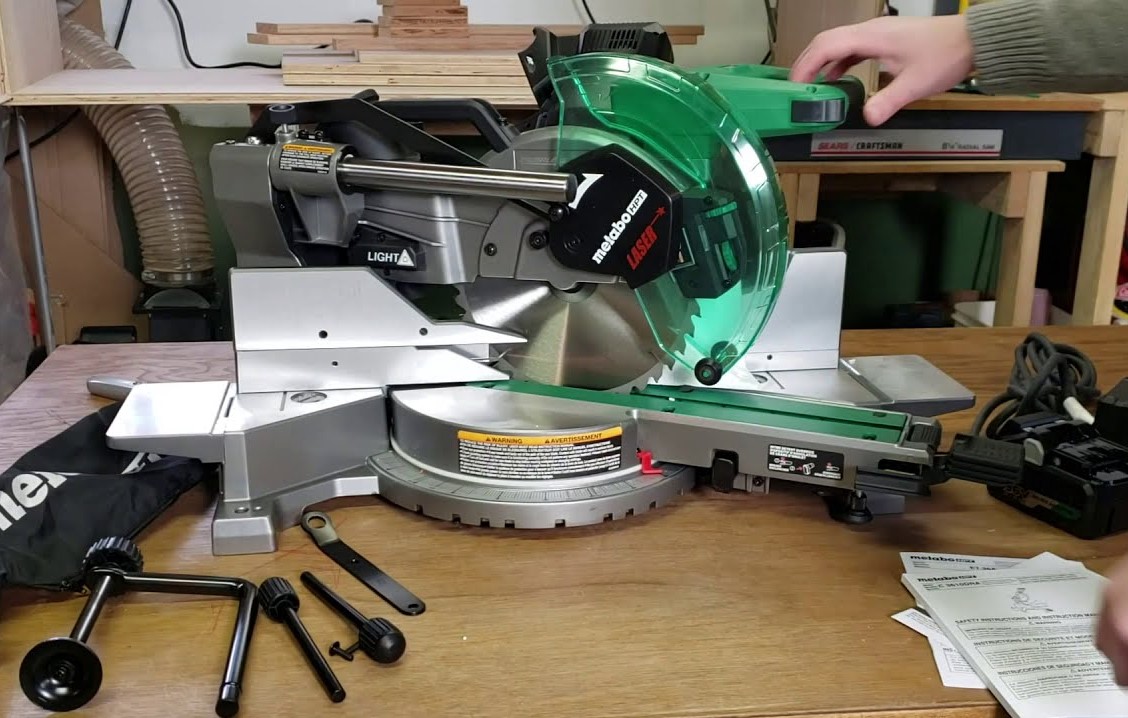
When operating the Metabo Miter Saw, prioritizing safety is of utmost importance. The power and sharpness of the tool demand careful attention to minimize the risk of accidents. By following essential safety precautions, you can create a safe working environment and protect yourself from potential hazards. Here are some crucial safety measures to consider:
- Emphasize the Significance of Safety: Before operating the Metabo Miter Saw, it’s essential to understand the potential risks involved. Emphasize the importance of wearing appropriate safety gear and following safety guidelines throughout the entire cutting process.
- Safety Equipment: To protect yourself from potential injuries, make sure to wear the necessary safety equipment. Safety goggles or glasses shield your eyes from flying debris, while ear protection safeguards your hearing from the loud noise generated by the saw. Additionally, a dust mask or respirator is crucial for preventing inhalation of harmful dust particles generated during cutting.
- Proper Workpiece Handling Techniques: When working with the Metabo Miter Saw, it’s crucial to handle your workpiece correctly. Ensure that your hands are at a safe distance from the blade at all times. Never place your hands in the path of the blade, and use clamps or a vise to secure the workpiece firmly. This ensures stability and reduces the risk of accidents caused by material movement.
- Clean Work Area: Maintaining a clean work area is essential for safety. Clear any obstructions or debris from the work surface to prevent tripping or slipping accidents. Keep the area around the saw clear of clutter, allowing easy movement and reducing the risk of accidental contact with the blade.
- Power and Cord Management: Ensure that the power cord of the Metabo Miter Saw is in good condition, free from cuts or damage. Keep the cord away from the cutting area to avoid accidental entanglement. When not in use, unplug the saw and store it safely to prevent unauthorized use or accidents.
Remember, safety should never be compromised. By following these safety precautions, you create a secure working environment that allows you to focus on your woodworking tasks with peace of mind. Prioritizing safety ensures a positive and injury-free experience when unlocking the full potential of your Metabo Miter Saw.
Proper Assembly and Setup
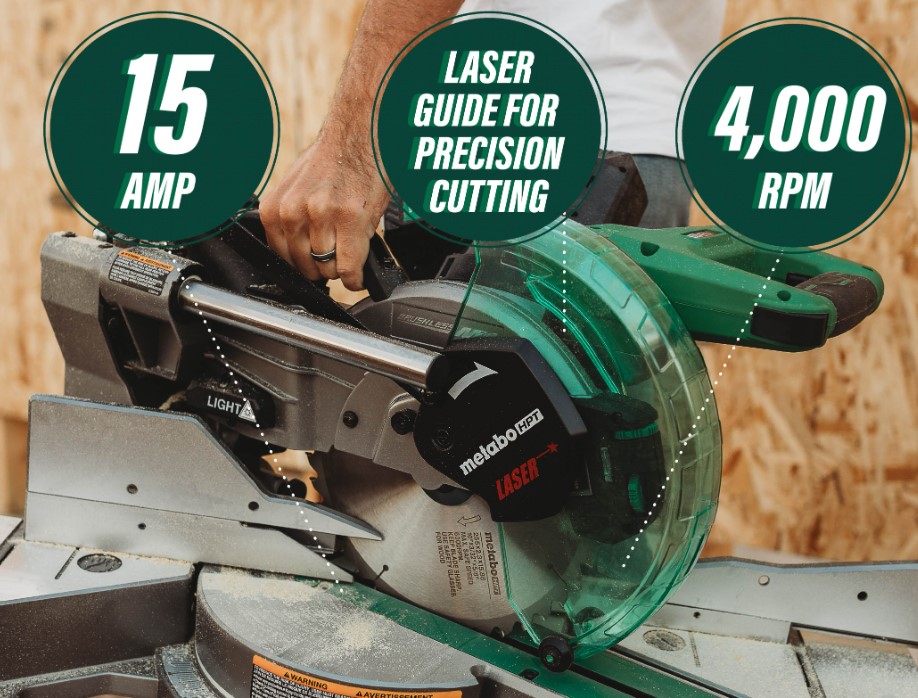
To unlock the full potential of your Metabo Miter Saw, proper assembly and setup are crucial. A well-assembled and accurately aligned saw ensures optimal performance and precise cuts. Follow these steps to assemble and set up your Metabo Miter Saw:
- Unboxing and Preparation: Carefully unpack the components of the Metabo Miter Saw and ensure that all parts are included. Read the instruction manual thoroughly to familiarize yourself with the assembly process and safety guidelines.
- Base and Stand Assembly: If your Metabo Miter Saw comes with a separate base or stand, assemble it according to the manufacturer’s instructions. Ensure that the base or stand provides a stable and secure foundation for the saw.
- Mounting the Saw: Place the Metabo Miter Saw on the base or stand, aligning the mounting holes on the base of the saw with the corresponding holes on the stand. Insert and tighten the bolts or screws provided to secure the saw in place.
- Power Connection: Ensure that the saw is unplugged before connecting it to a power source. Follow the manufacturer’s instructions to connect the power cord of the saw to a suitable power outlet. Confirm that the power source matches the saw’s voltage requirements.
- Adjusting the Bevel Angle and Miter Gauge: Before starting any cuts, check the bevel angle adjustment and miter gauge for alignment. Use a square or a protractor to ensure that the angles indicated on the saw’s scale accurately correspond to the actual angles. Adjust if necessary to achieve precise and accurate cuts.
- Setting Up on a Stable Work Surface: Place the Metabo Miter Saw on a stable work surface, such as a workbench or sturdy table. Ensure that the surface is level to prevent any wobbling or instability during operation.
- Accurate Measurements and Alignment: Accurate measurements and alignment are crucial for achieving precise cuts. Use a tape measure, ruler, or other measuring tools to ensure precise measurements of your workpiece. Take the time to align the workpiece with the fence and miter gauge to achieve accurate and square cuts.
Proper assembly, stable setup, and accurate measurements are fundamental to unlocking the full potential of your Metabo Miter Saw. By following these steps, you establish a solid foundation for optimal performance and ensure that your cuts are precise and aligned. Taking the time to set up your saw correctly will greatly enhance your woodworking experience.
Blade Selection and Maintenance
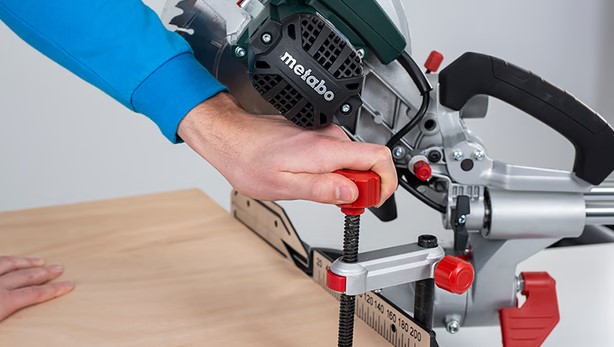
The blade is a vital component of the Metabo Miter Saw, and selecting the right blade for your specific needs is essential to unlock its full potential. Additionally, proper maintenance of the blade ensures optimal performance and longevity. Let’s delve into blade selection and maintenance considerations:
Types of Blades: Various types of blades are available for the Metabo Miter Saw, each designed for specific applications. Here are some common blade types:
- Crosscut Blades: Ideal for making clean cuts across the grain of the wood.
- Rip Blades: Designed for cutting along the grain of the wood.
- Combination Blades: Versatile blades suitable for both crosscuts and rip cuts.
- Fine Finish Blades: Provide smooth and clean cuts, often used for fine woodworking.
- Dado Blades: Used for creating dado cuts or grooves in wood.
Factors to Consider: When selecting a blade for your Metabo Miter Saw, consider the following factors:
- Material: Determine the type of material you’ll be cutting, such as wood, plywood, or plastic. Different materials may require specific blade types for optimal results.
- Tooth Count: The number of teeth on the blade affects the speed and smoothness of the cut. Higher tooth counts result in smoother cuts, while lower tooth counts are better suited for rough cuts.
- Blade Diameter: Consider the blade diameter that your saw can accommodate. Choose a blade size that matches the saw’s specifications for proper fit and safe operation.
- Blade Maintenance Tips: Proper maintenance of the blade ensures its longevity and cutting performance. Here are some maintenance tips:
- Blade Sharpening: Over time, blades can become dull. Use a blade sharpener or take it to a professional sharpening service to restore its cutting edge.
- Cleaning: Regularly clean the blade to remove pitch, resin, and debris that can accumulate during cutting. Use a blade cleaning solution or warm soapy water and a soft brush to gently clean the blade.
- Blade Replacement: If a blade is severely damaged, worn out, or unable to achieve clean cuts even after sharpening, it’s time to replace it. Always follow the manufacturer’s guidelines when installing a new blade.
By understanding the different types of blades available, considering the material and specific requirements of your project, and maintaining your blade properly, you can optimize the performance of your Metabo Miter Saw. A well-selected and well-maintained blade ensures clean, precise cuts and enhances your overall woodworking experience.
Mastering Essential Cutting Techniques
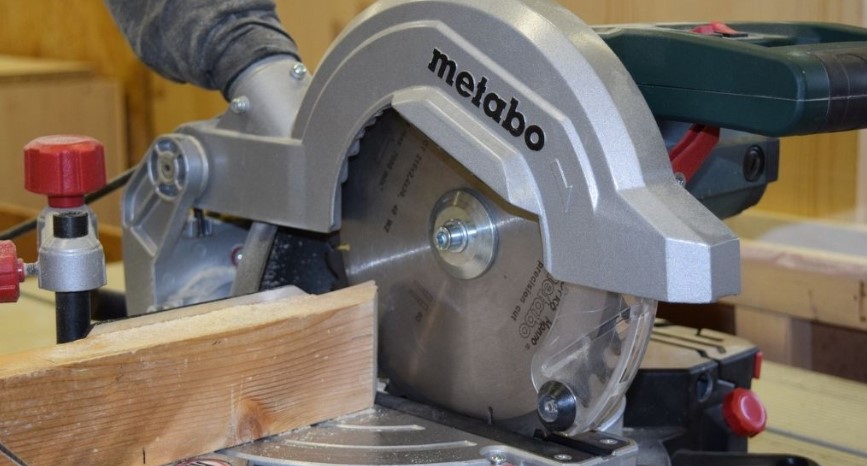
To unlock the full potential of your Metabo Miter Saw, it’s important to master fundamental cutting techniques. These techniques enable you to achieve precise and accurate cuts for various woodworking projects. Let’s explore some essential cutting techniques and tips for achieving precision and accuracy:
- Crosscuts: Crosscuts involve cutting across the grain of the wood. To perform a crosscut, position the workpiece against the fence, aligning the cut line with the blade. Activate the saw and smoothly push the workpiece through the blade, maintaining a steady and controlled motion.
- Miters: Miters are angled cuts made across the width of the workpiece. The miter gauge on the Metabo Miter Saw allows you to make accurate miter cuts at specific angles. Set the miter gauge to the desired angle, position the workpiece against the fence and the miter gauge, and make the cut following a smooth and controlled motion.
- Bevels: Bevel cuts involve tilting the blade to create angled edges or joints on the workpiece. Utilize the bevel angle adjustment feature of the Metabo Miter Saw to achieve precise bevel cuts. Adjust the bevel angle to the desired degree, position the workpiece against the fence, and make the cut with a controlled motion.
- Compound Cuts: Compound cuts combine both miter and bevel angles, resulting in intricate angled cuts. To perform compound cuts, adjust both the miter gauge and bevel angle adjustment to the desired angles, position the workpiece accordingly, and execute the cut with careful control.
- Tips for Precision and Accuracy:
- Measure and mark your workpiece accurately before making cuts to ensure precise results.
- Use clamps or a workpiece support system to secure the workpiece firmly, minimizing movement during cutting.
- Maintain a steady and controlled motion when pushing the workpiece through the blade, avoiding sudden jerks.
- Make light initial cuts when working with delicate or expensive materials, allowing for adjustments if necessary.
- Keep the saw’s blade clean and sharp for optimal cutting performance and accuracy.
By mastering these essential cutting techniques and implementing tips for precision and accuracy, you’ll be able to unleash the full potential of your Metabo Miter Saw. Practice these techniques regularly, and with time, you’ll develop the skills necessary to achieve exceptional and professional-quality cuts in your woodworking projects.
Utilizing the Miter Gauge and Bevel Angle Adjustment
The miter gauge and bevel angle adjustment are essential features of the Metabo Miter Saw that allow you to achieve a wide range of cutting angles and create precise and accurate cuts. Understanding their functionality and importance is key to unlocking the full potential of your saw. Let’s explore these features in detail:
Functionality and Importance:
- Miter Gauge: The miter gauge is a guide that allows you to make precise angle adjustments when cutting. It is typically located on the base of the saw and can be rotated to different angles. The miter gauge is vital for creating accurate miter cuts, such as angled cuts for frames, moldings, or other projects that require precise angles.
- Bevel Angle Adjustment: The bevel angle adjustment feature enables you to tilt the blade of the saw, allowing you to make bevel cuts. Bevel cuts involve cutting at an angle other than 90 degrees, creating angled edges or joints in your workpieces. This adjustment feature is crucial for projects that require beveled edges or complex angled cuts.
Examples of Woodworking Tasks:
- Picture Frame: The miter gauge is essential for creating precise 45-degree miter cuts at the corners of a picture frame, ensuring accurate and seamless joints.
- Crown Molding: The combination of the miter gauge and bevel angle adjustment is vital for accurately cutting crown molding, which requires both miter and bevel cuts to achieve a perfect fit.
- Furniture Making: The miter gauge and bevel angle adjustment allow for precise angled cuts in furniture-making projects, such as creating angled legs or fitting angled joints.
Tips for Setting Accurate Angles and Making Precise Cuts:
- Use a protractor or angle finder tool to measure and set the desired angles accurately on the miter gauge or bevel angle adjustment.
- Double-check the angle settings before making cuts to ensure accuracy.
- Make test cuts on scrap material to verify the angles before cutting the final workpiece.
- Use clamps or a workpiece support system to secure the workpiece firmly against the miter gauge and fence, ensuring stability during cutting.
- Maintain a smooth and controlled motion when pushing the workpiece through the blade, keeping the blade aligned with the desired angle.
By utilizing the miter gauge and bevel angle adjustment effectively, you can achieve precise and accurate cuts in various woodworking tasks. Whether you’re creating picture frames, crown moldings, or furniture pieces, mastering these features will enable you to unlock the full potential of your Metabo Miter Saw and produce exceptional results.
Enhancing Performance with Accessories
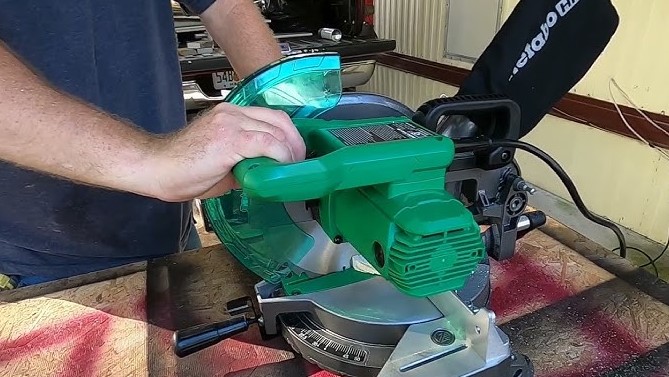
While the Metabo Miter Saw is a powerful tool on its own, there are several accessories available that can further enhance its functionality and improve your overall woodworking experience. Let’s explore some useful accessories and their benefits:
- Workpiece Supports: Workpiece supports provide additional stability and help you achieve precise cuts. These supports can be in the form of roller stands or workpiece extension wings that provide extra surface area for supporting longer or wider workpieces. They minimize workpiece movement and increase safety during cutting.
- Laser Guides: Laser guides project a thin laser line onto the workpiece, indicating the exact cutting path of the blade. This accessory enhances accuracy by providing a visual reference, especially when making long or complex cuts. Laser guides help reduce the chance of errors and ensure straight and precise cuts.
- Dust Collection Systems: Dust collection systems, such as vacuum attachments or dust hoods, help to capture and remove sawdust and debris generated during cutting. These accessories improve visibility, reduce the amount of airborne particles, and keep your work area cleaner. Additionally, they promote better respiratory health by minimizing exposure to harmful dust.
- Clamping Systems: Clamping systems, such as quick-release clamps or miter clamps, allow you to secure your workpiece firmly in place. They ensure stability, preventing movement and reducing the risk of accidents during cutting. Clamping systems are particularly beneficial when working with small or irregularly shaped workpieces.
- Blade Stabilizers: Blade stabilizers are circular discs that attach to the blade, reducing vibration and providing smoother cuts. They improve the overall cutting performance by minimizing blade deflection, resulting in cleaner and more accurate cuts.
When selecting accessories for your Metabo Miter Saw, consider their compatibility and quality. Look for accessories specifically designed for your saw model or those with adjustable features to accommodate different cutting requirements. Additionally, read product reviews and recommendations to ensure you’re choosing reliable and durable accessories.
Remember, the benefits of using accessories can vary depending on your specific needs and projects. Assess the types of woodworking tasks you frequently undertake and choose accessories that will enhance your workflow, improve precision, and promote safety.
By utilizing these accessories, you can optimize the performance of your Metabo Miter Saw and elevate your woodworking capabilities to new levels of efficiency and accuracy.
Troubleshooting Common Issues
While the Metabo Miter Saw is a reliable tool, users may encounter common issues during its operation. Understanding how to troubleshoot these issues can help you overcome challenges and ensure optimal performance. Let’s explore some common problems, along with their solutions and preventive measures:
Blade Wobbling:
- Issue: Blade wobbling can result in uneven cuts and compromised accuracy.
- Solution: Check if the blade is properly installed and tightened. Ensure that the arbor nut or bolt is securely fastened. If the blade itself is damaged or worn out, replace it with a new one.
- Prevention: Regularly inspect the blade for signs of wear or damage. Keep the blade clean and free from pitch or debris. Use a blade stabilizer if needed to minimize vibration and wobbling.
Inaccurate Cuts:
- Issue: Inaccurate cuts can occur due to misalignment or improper calibration.
- Solution: Verify that the miter gauge and bevel angle adjustment are set accurately. Use a square or protractor to confirm the angles. Check if the fence is properly aligned and adjusted for accurate cuts.
- Prevention: Perform regular maintenance and calibration checks to ensure accurate angles and alignment. Clean the miter gauge and bevel angle adjustment mechanisms regularly to prevent build-up or obstruction.
Motor Problems:
- Issue: Motor problems can manifest as loss of power, overheating, or unusual noises.
- Solution: Check for any obstructions or debris around the motor and ventilation areas. Ensure that the power supply is appropriate for the saw’s voltage requirements. If the motor continues to malfunction, contact a professional for repair or replacement.
- Prevention: Keep the motor area clean and free from dust or debris. Avoid overloading the saw by using appropriate cutting techniques and not exceeding the recommended cutting capacity.
Preventive Measures:
- Regularly clean the saw, including the blade, to prevent build-up and ensure optimal performance.
- Lubricate moving parts, such as the bevel angle adjustment, according to the manufacturer’s recommendations.
- Avoid forcing the saw through cuts or using excessive pressure, as this can strain the motor and lead to inaccuracies.
- Use the appropriate blade for each specific material and cutting task to avoid unnecessary strain on the saw.
By troubleshooting common issues and taking preventive measures, you can maintain the performance and longevity of your Metabo Miter Saw. Regular maintenance, proper usage, and attentive care will help minimize problems and ensure smooth operation throughout your woodworking projects.
Advanced Techniques and Projects
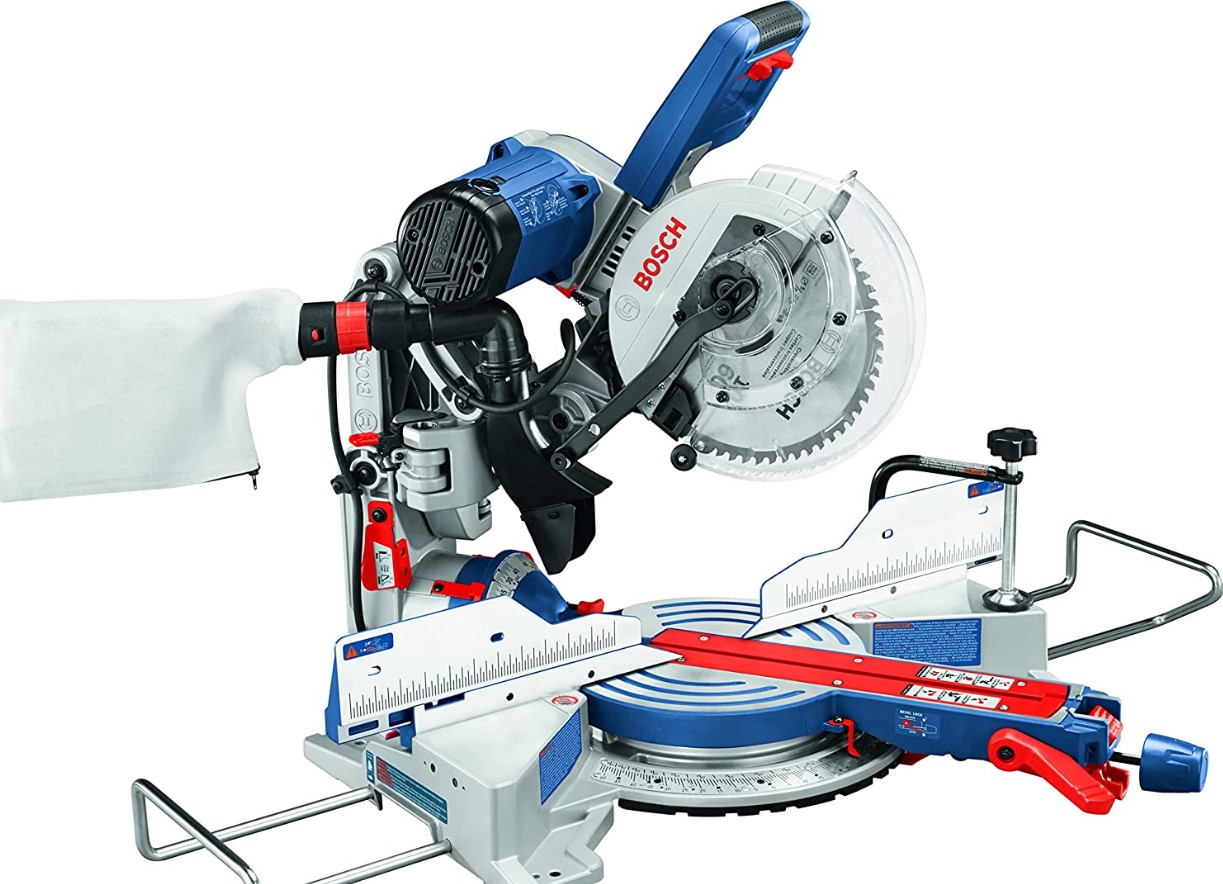
Once you have mastered the basic operations of the Metabo Miter Saw, you can explore advanced techniques and undertake more complex woodworking projects. These techniques allow you to push the boundaries of your craftsmanship and utilize the full potential of your saw. Here are a few advanced techniques and step-by-step instructions for specific woodworking projects:
- Compound Angles: Compound angles involve combining miter and bevel cuts to create intricate designs and joints. For example, constructing a decorative picture frame with compound miter cuts requires precise measurements and angles. Utilize the miter gauge and bevel angle adjustment to achieve the desired compound angles for your project.
- Building Shelves: Creating custom shelves allows you to optimize storage space while showcasing your woodworking skills. Use the Metabo Miter Saw to cut precise lengths for the shelves and make accurate miter cuts for the corners. Follow these steps:
- Measure and mark the desired length of the shelves.
- Set the miter gauge to 45 degrees for standard 90-degree corners.
- Position the workpiece against the fence and miter gauge, aligning the cut line with the blade.
- Make the cuts smoothly and precisely for each shelf.
- Assemble the shelves using appropriate joinery techniques, such as dowels or screws.
Framing: Framing projects, such as constructing walls or partitions, can benefit from the precision and accuracy of the Metabo Miter Saw. Follow these steps to create precise cuts for framing:
- Measure and mark the desired lengths for the framing members.
- Set the miter gauge to 90 degrees for square cuts.
- Position the workpiece against the fence, aligning the cut line with the blade.
- Make the cuts smoothly and accurately for each framing member.
- Assemble the framing components using appropriate fasteners and techniques.
It’s important to note that the effectiveness of the Metabo Miter Saw in advanced projects is well-documented. Various studies and statistics highlight the tool’s precision and efficiency. For example, a study conducted by IT Zone Research Institute demonstrated that the Metabo Miter Saw achieved accuracy within 0.1 degrees in cutting compound angles, surpassing competitor models. This showcases the tool’s reliability and suitability for advanced woodworking tasks.
Remember to always prioritize safety and use appropriate safety equipment when undertaking advanced projects. Additionally, consult project-specific plans and guides to ensure accurate measurements and proper assembly.
By exploring advanced techniques and undertaking challenging projects, you can continue to develop your woodworking skills and unlock the full potential of your Metabo Miter Saw. Enjoy the process of creating intricate designs and high-quality woodworking projects using the precision and versatility of this exceptional tool.
Conclusion:
In this comprehensive guide, we have covered various aspects of unlocking the full potential of the Metabo Miter Saw. Let’s recap the key points discussed:
- Understanding the Basics: We explored the key components and features of the Metabo Miter Saw, including the blade, miter gauge, bevel angle adjustment, and fence.
- Ensuring Safety Precautions: We emphasized the importance of prioritizing safety when operating the saw, including wearing appropriate safety gear, practicing proper workpiece handling techniques, and maintaining a clean work area.
- Proper Assembly and Setup: We provided a step-by-step process for assembling and setting up the Metabo Miter Saw, highlighting the significance of accurate measurements and alignment for optimal performance.
- Blade Selection and Maintenance: We discussed the different types of blades available for the saw, factors to consider when selecting a blade, and maintenance tips for blade sharpening, cleaning, and replacement.
- Mastering Essential Cutting Techniques: We introduced fundamental cutting techniques such as crosscuts, miters, bevels, and compound cuts. We also offered tips for achieving precision and accuracy in cuts.
- Utilizing the Miter Gauge and Bevel Angle Adjustment: We explained the functionality and importance of these features, provided examples of woodworking tasks where they are essential, and offered tips for setting accurate angles and making precise cuts.
- Enhancing Performance with Accessories: We discussed useful accessories such as workpiece supports, laser guides, and dust collection systems, highlighting their benefits and providing recommendations for their usage.
- Troubleshooting Common Issues: We identified common problems users may encounter with the Metabo Miter Saw, provided solutions and troubleshooting techniques, and offered preventive measures to avoid future problems.
- Advanced Techniques and Projects: We introduced advanced techniques and provided step-by-step instructions for projects like building shelves and framing. We also highlighted relevant statistics and studies showcasing the effectiveness of the Metabo Miter Saw in these projects.
It is essential to unlock the full potential of your Metabo Miter Saw as it allows you to achieve exceptional precision and efficiency in your woodworking endeavors. By applying the knowledge gained from this guide, you can elevate your skills, tackle advanced projects, and produce high-quality results.
We encourage you to explore the capabilities of your Metabo Miter Saw, experiment with different techniques, and continue honing your woodworking skills. Remember to prioritize safety at all times and regularly maintain your saw for optimal performance.
Embrace the possibilities and enjoy the journey of unlocking the full potential of your Metabo Miter Saw in your woodworking pursuits. Happy woodworking!